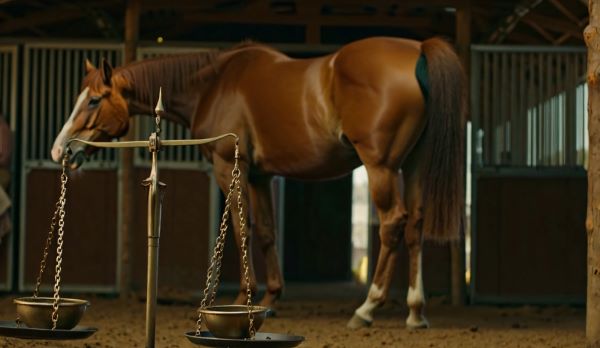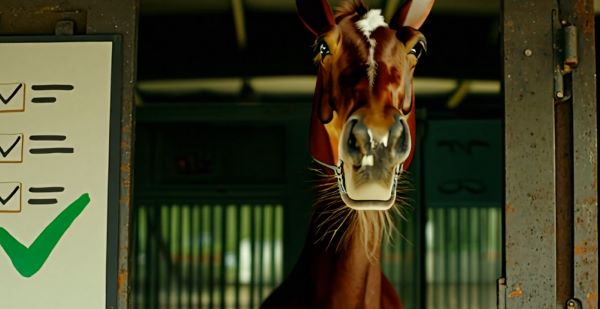You probably think I’m all about pulling off the shoes, and throwing away the bit. But what I really hate is seeing a horse subjected to a stall.
A horse is an intelligent animal. Head rocking is common equine behaviour in a stall. It’s to alleviate the boredom.
And whether a horse is barefoot or shod, zero movement can only result in a starved white line.
What I dislike most about stalls is that it’s real human intervention in the horse’s natural life.
The owner using horse shoes might say it’s because they ride on roads 90% of the time.
The owner using a bit might say it’s the only way to control their horse.
But the owner locking their horse in a stall 12+ hours a day can only say it’s for their own convenience.
Of course, the stall is sometimes our only option. But let’s always live and work around giving our horses as much time at pasture as possible.
Horse gentler, Ray Hunt, had a blissfully simple mantra for keeping horses. “Make the wrong things difficult and the right things easy”.
Why make the wrong things unavoidable?

And now onto Jeff
“In horse training, the principle of “make the wrong things difficult and the right things easy” is a highly effective approach for encouraging desired behaviors in horses. This technique helps horses understand what’s expected of them without the need for force, promoting a more cooperative and respectful partnership.”
“For instance, if a horse is crowding a handler’s space, a trainer might gently move the horse back, making it harder for the horse to stay in the unwanted position. Once the horse steps back, the handler can release pressure and reward the correct response, reinforcing the idea that standing at a respectful distance is the easier, more comfortable option. This creates a learning experience where the horse starts to associate good behavior with comfort and unwanted behavior with mild inconvenience or discomfort.”

“Similarly, when teaching a horse to load into a trailer, trainers often make standing outside of the trailer less comfortable—perhaps by adding gentle pressure—while rewarding every forward step toward the trailer. As the horse moves closer to the trailer, the trainer reduces the pressure and offers praise or a treat, making the correct behavior easy and the wrong one less pleasant. Over time, the horse learns that entering the trailer is the preferred choice.”
“This approach encourages horses to actively participate in learning rather than simply reacting out of fear or submission. By shaping behavior in a way that makes the “right” choices easy and the “wrong” choices less appealing, horses are more willing to follow guidance without feeling forced or stressed. This technique strengthens the bond between horse and rider or trainer, as it builds mutual trust and reinforces positive behaviors in a natural, low-stress way. Ultimately, it leads to a more willing and attentive partner in the horse. Jeff”
Next up
I so agree,we have limited pasture but our little herd of 3 have 8 hours out every day,come in at night with thye stable door left open and a yard area to come and go in, they are so happy on the move and the older one’s don’t have that stiffness in the morning through standing in one spot!
Sometimes a stall is necessary for a sick horse, or during transport and quarantine, or over Guy Fawkes and New Years.
But really paddocks do seem to be better.
The only time my 4.5 yr old american paint is in a stall is when the weather is really bad, and better for him to be inside than out. Beyond that, when it rains or is cold he is still outside, in his paddock. He has a tree line and pasture buddies all around. Since I moved him back to where he was originally trained 2 yrs ago, he is much more content and at peace. The first night there, he did lay down for a short time. His trainer and I were both pleased with that…he’s happy and safe; that’s all that matters.
We put our horses in at night due to winter and feed them grain . But in fit weather conditions out in pasture as much as possible. We have a run in shed for them to get in if they desire but they don’t spend to much time in there. And they seem to be glad to get out in the morning.
That is a well known expression in natural horsemanship, however it is never used with respect to how you stable your horse. It is all about how you train your horse whether it be ground work or ridden. It’s about setting things up so the horse gets to choose the right thing (such as walking freely at your side) rather than running over the top of you and how you.
During the winter i will leave my horses in the barn if it s very cold outside. when it gets warmer out ill just leave them outside.
I agree totally only ever stable if the horse is sick annd needs it. stabling is the most unatural and nearly cruel thing to do horses graze day and night even in a small paddock .The most natural thing to do is head down and graze with at least one other horse. head up locked in a stable is sooo unatural to a horse. 🙁
agreed in theory. but in practice not possible if you have no fenced pastures. in our country most people tether their horses. fenced fields are uncommon. so what do you recommend, when there are no fences?
i’d love to hear your thoughts on our situation.
we have a 14×20 foot stall for our horse, by night, and he is tethered by day in the olive orchard where a lot of grass is growing.
in absence of being able to put up fencing, how can we improve?
How does the approach of “making the wrong things difficult and the right things easy” work in horse training?
This method gently encourages desired behaviors by making unwanted actions less comfortable and rewarding correct responses, helping horses learn naturally without force, fostering a cooperative and trusting relationship.